Part 2 – The art & craft of planning your perfect greenhouse
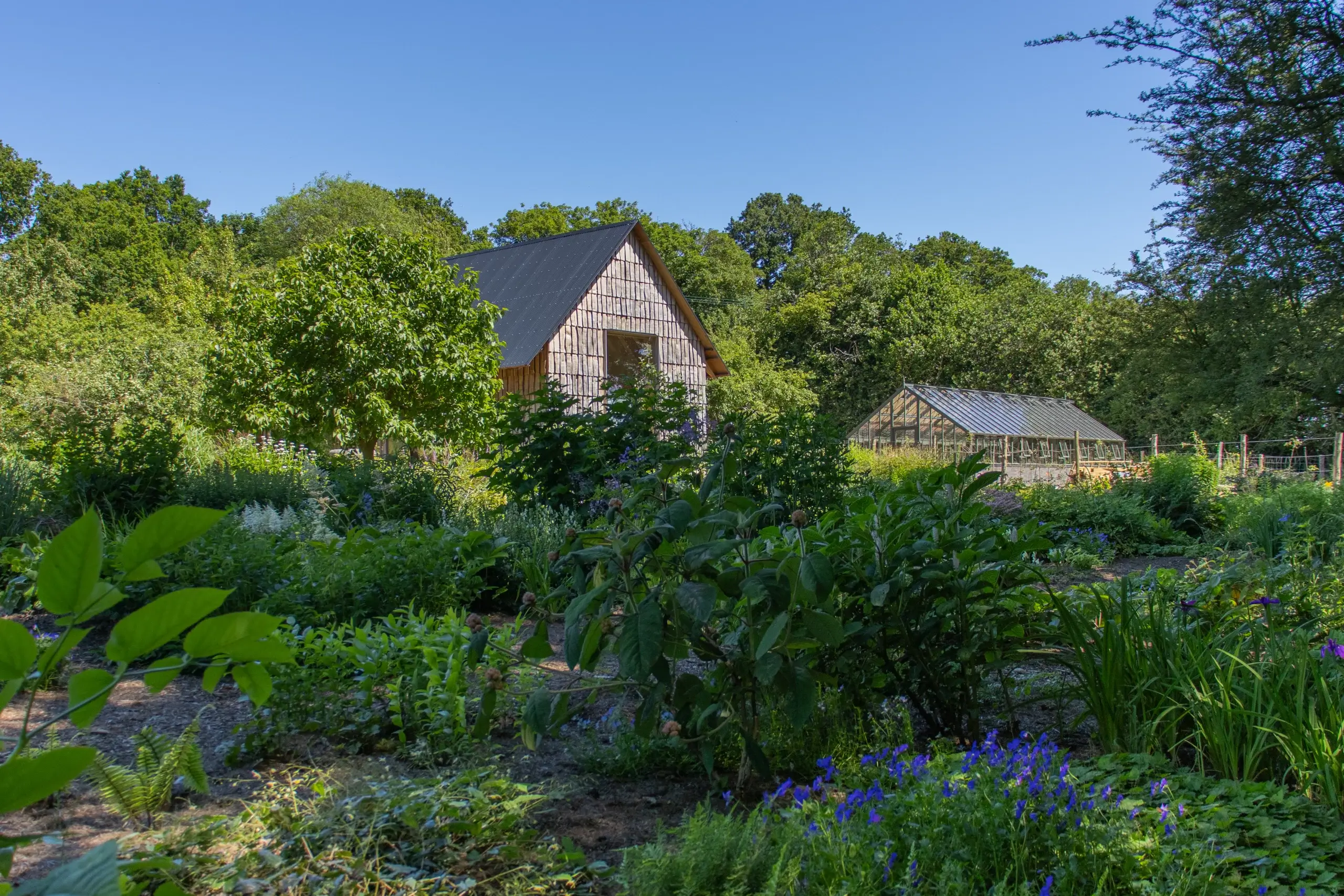
Above: A bespoke Edwardian freestanding greenhouse designed for The Sunnyside Rural Trust, a charity that uses plants and gardens to improve the physical and mental health of those with learning disabilities. The greenhouse is central to their Orchard Nursery, located at The Serge Hill Project. Read more about that here
Location, location, location
Placement and orientation of the greenhouse is clearly important and there are a number of things to think about, paramount of which is what you intend to grow and the optimal growing conditions required. A south-facing, east/west orientation is the generally accepted objective, but with temperatures on the rise don’t rule out areas of your garden where some natural shade can provide respite from an unrelenting summer sun.
You get more greenhouse bang for your hard-earned buck if you have room for a freestanding structure, and if you have flexibility on the specific dimensions, choosing an “off-the-peg” standard building will save you money. For example, our range of Signature buildings – models and footprints we’ve learnt over the years will satisfy many gardeners and a wide variety of gardens – share common features such as standardised bay widths and defined ventilation options, enabling us to pass on the benefit of more efficient production to you. As tried and tested options, they don’t require the same design time as a bespoke project either, and our simple self-certification process also negates the need for a site survey, saving further time and money.
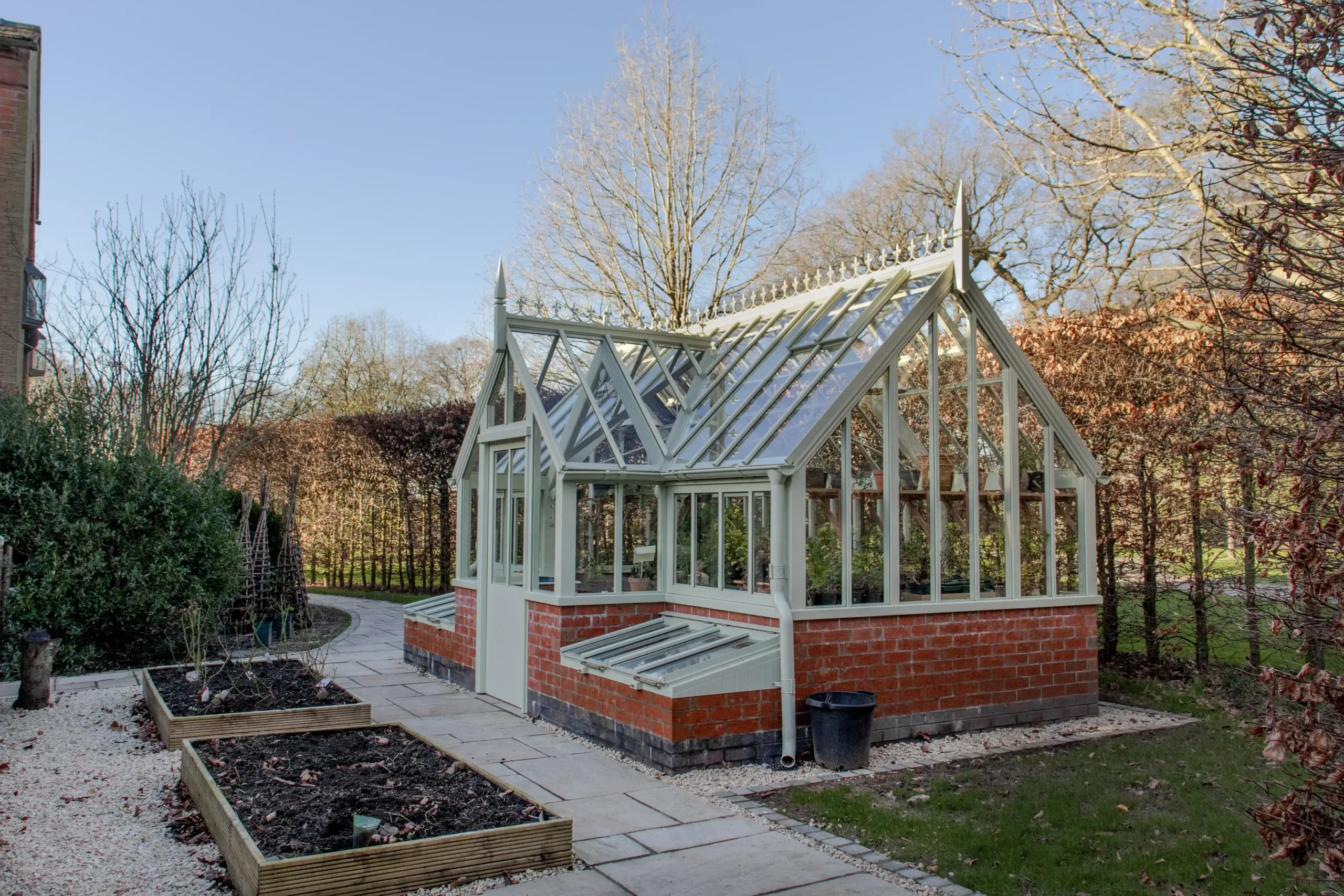
Above: Our range of standard buildings now includes the Egerton, built to our Victorian specification.
If you have the opportunity, however, incorporating a high wall into your greenhouse offers many benefits. The pioneering Victorians paved the way with all manner of lean-to designs, varying the roof pitch to optimise (or lessen) solar gain, and digging down to create a more protected, even-temperatured environment in which exotics of the time such as melons, tomatoes and cucumbers could flourish. A high wall is the ideal support for vines and other fruit trees which also benefit from the slow release of heat from the brickwork as the greenhouse cools at the end of the day. You may have a suitable wall in your garden – a boundary wall or a house, garage or outbuilding wall, which you can commandeer. Or you can build a wall to suit.

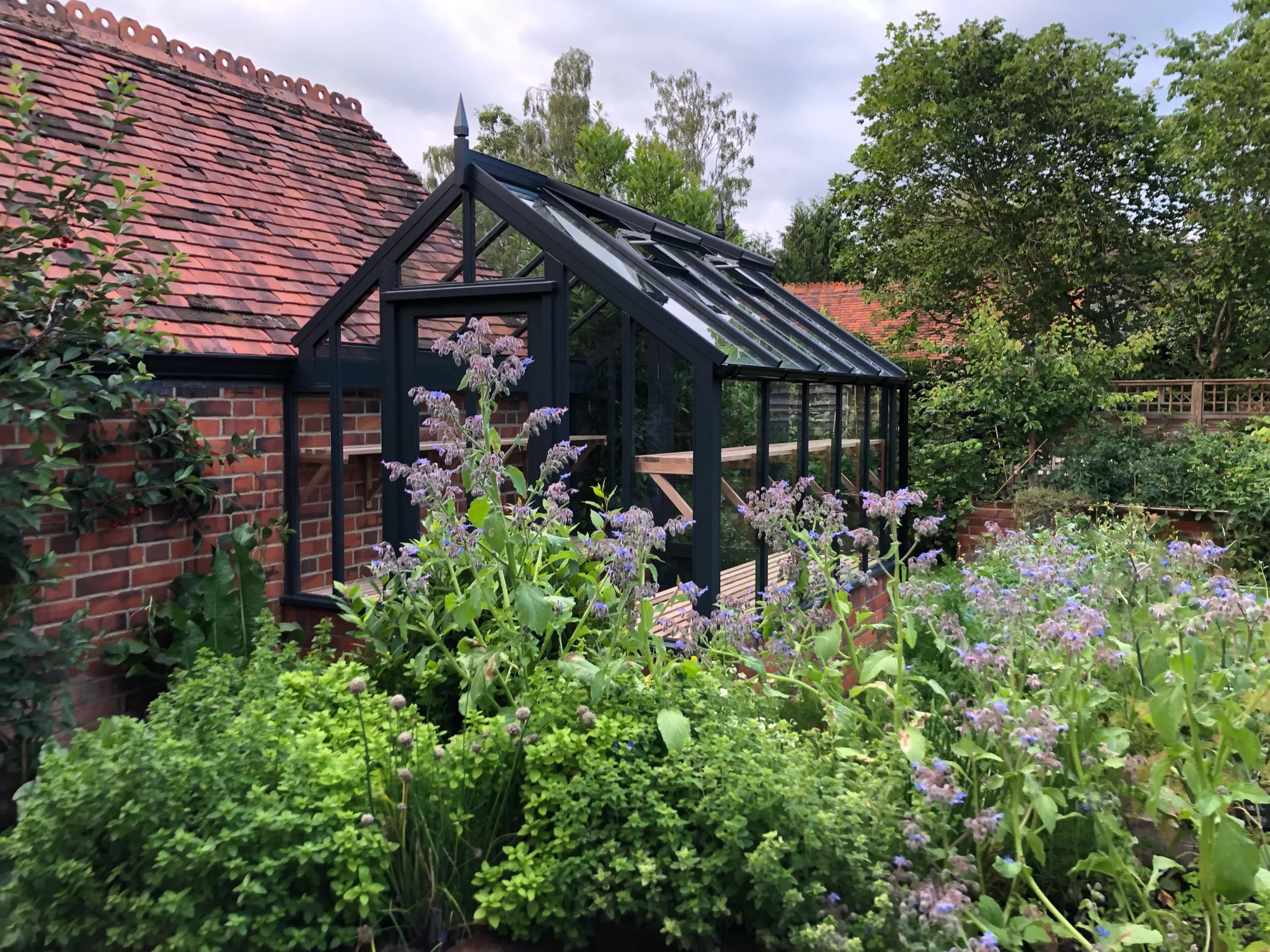
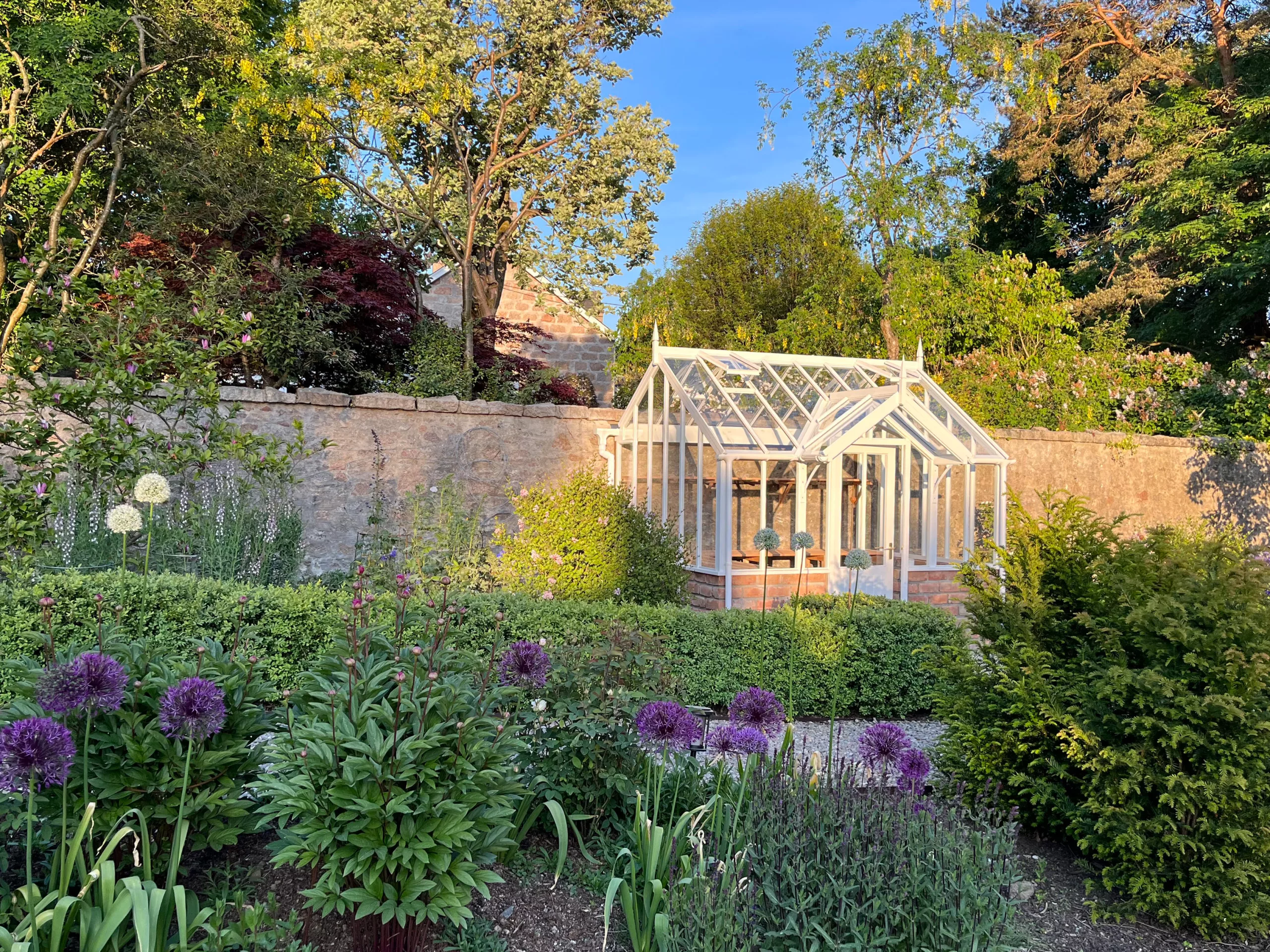
There are all sorts of ways of incorporating a high wall into your greenhouse. Above left: a bespoke Edwardian spec three-quarter span greenhouse with protruding porch and cold frames either side. All the walls were built to suit. Above centre: a bespoke Edwardian greenhouse sharing the gutter of an existing outhouse. Above right: our Signature Croft standard building modified to incorporate a granite boundary wall.
If you’re really keen to incorporate a high wall but have a limitation on how high that can be, a three-quarter span design could be the solution. Most commonly adjoining the side of the wall via a valley junction, this is a great way to claim more headroom in the greenhouse without needing to compromise on the roof pitch.
Maintenance
There are two aspects to consider where greenhouse maintenance is concerned – the regular clearing out and cleaning which keeps glass clean, gutters free of debris and minimises the harbouring of pests and diseases, and the more long-term maintenance jobs that will make sure your greenhouse lasts for many years. Regular cleaning should be done twice a year – we’d suggest at the beginning and end of the main growing season. You should empty the greenhouse as much as you can and then use soft brushes alongside a hose or jet wash to clean everything inside and out. A rag wrapped around a narrow cane or plant label makes the perfect tool for getting into the nooks and crannies that moss and mould can build up in. Take this opportunity to check over the condition of painted framework, sanding and repainting any areas that have been chipped or become cracked. Keeping on top of any small defects will maximise the recoating lifespan of any painted surfaces and give you longer in between this much bigger job.
Regardless of what your greenhouse is made of, regular cleaning is essential. Longer-term maintenance can be more daunting, however, especially if you have a larger greenhouse. Which is where the advantages of a maintenance-free aluminium roof become apparent. The use of timber for window and door frames has seen a resurgence in recent years with man-made materials losing their appeal against natural, sustainable options and the development of water-based coatings making maintenance and longevity much less labour-intensive. Accessing the outside of a high roof to paint narrow glazing bars remains an unpalatable task for most of us, however, regardless of how infrequently we might need to do that and being able to simply clean from the ground with a long brush/hose is a major advantage.

Above: It’s easy to keep our aluminium roof clean from the ground and no further maintenance is required.
If you already own one of our greenhouses and need any more detailed advice on how to keep it at it’s best, give us a call.
Longevity
A core principle of living a more sustainable lifestyle is to buy once and buy good. Having to replace worn out or unrepairable products, or items that have simply lost their lustre, fuels the on-going cycle of goods finding their way into landfill and perpetuates the idea that the lifespan of a product is no more than a couple of years. This mindset is a fairly modern one, however, and making things properly with the intention of them outliving the maker, has been the norm for generations before and continues to be a core philosophy for us. We embrace modern advancements in materials and manufacturing processes, but continue to respect time-honoured craftsmanship alongside this.
Accoya® wood is guaranteed against rot for 50 years with a minimum service life of over 70 years and as an approved Accoya® manufacturer we deploy a range of additional joinery and fixing techniques to further enhance the longevity of our framework. As we’ve already mentioned, the paint system has a recoating warranty of up to 12 years and we use quality stainless steel fixings and solid brass ironmongery throughout. Our materials specification is without compromise, and our attention to detail throughout the design and manufacturing stages is matched by our installation service – a vital step which, in our opinion is the only way the longevity of a greenhouse can be guaranteed – inept installation can cause all sorts of problems further down the line which is why our prices always include this (along with delivery) and why we will never leave your greenhouse in a series of boxes on your lawn for you to fathom out.
Longevity is another core consideration and something you’d expect to have fewer worries about if you choose to invest in a greenhouse made of materials specified to stand the test of time.
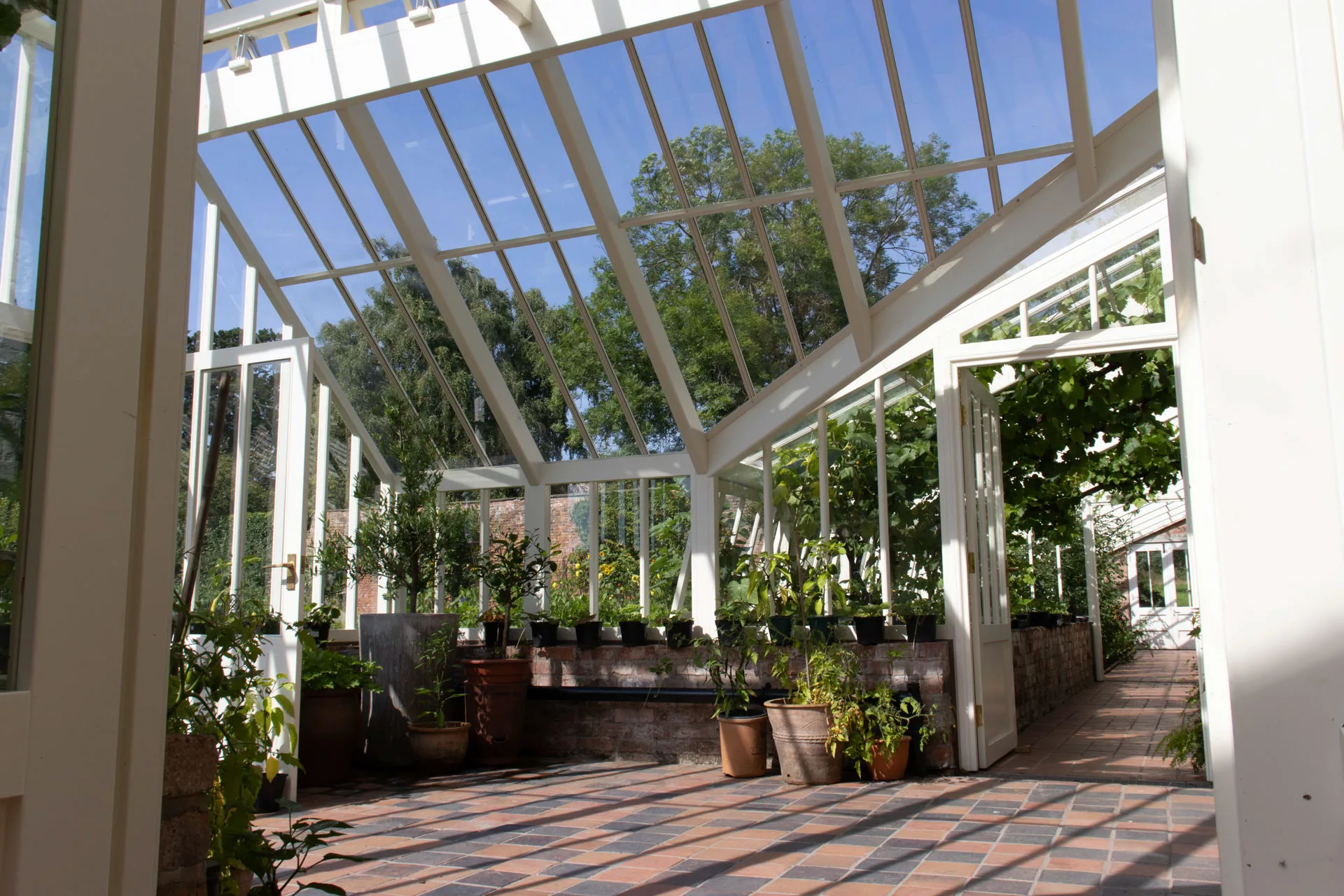
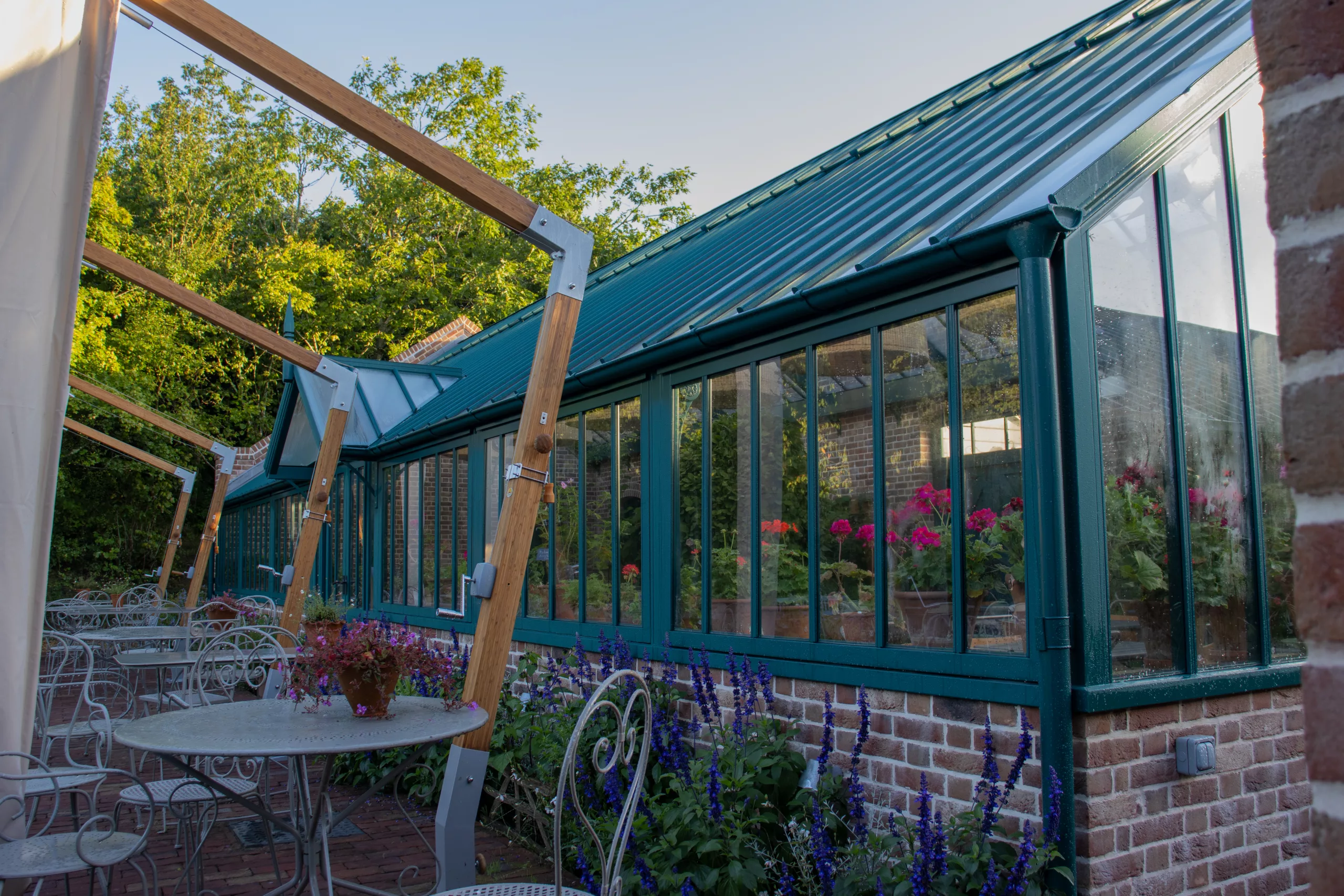
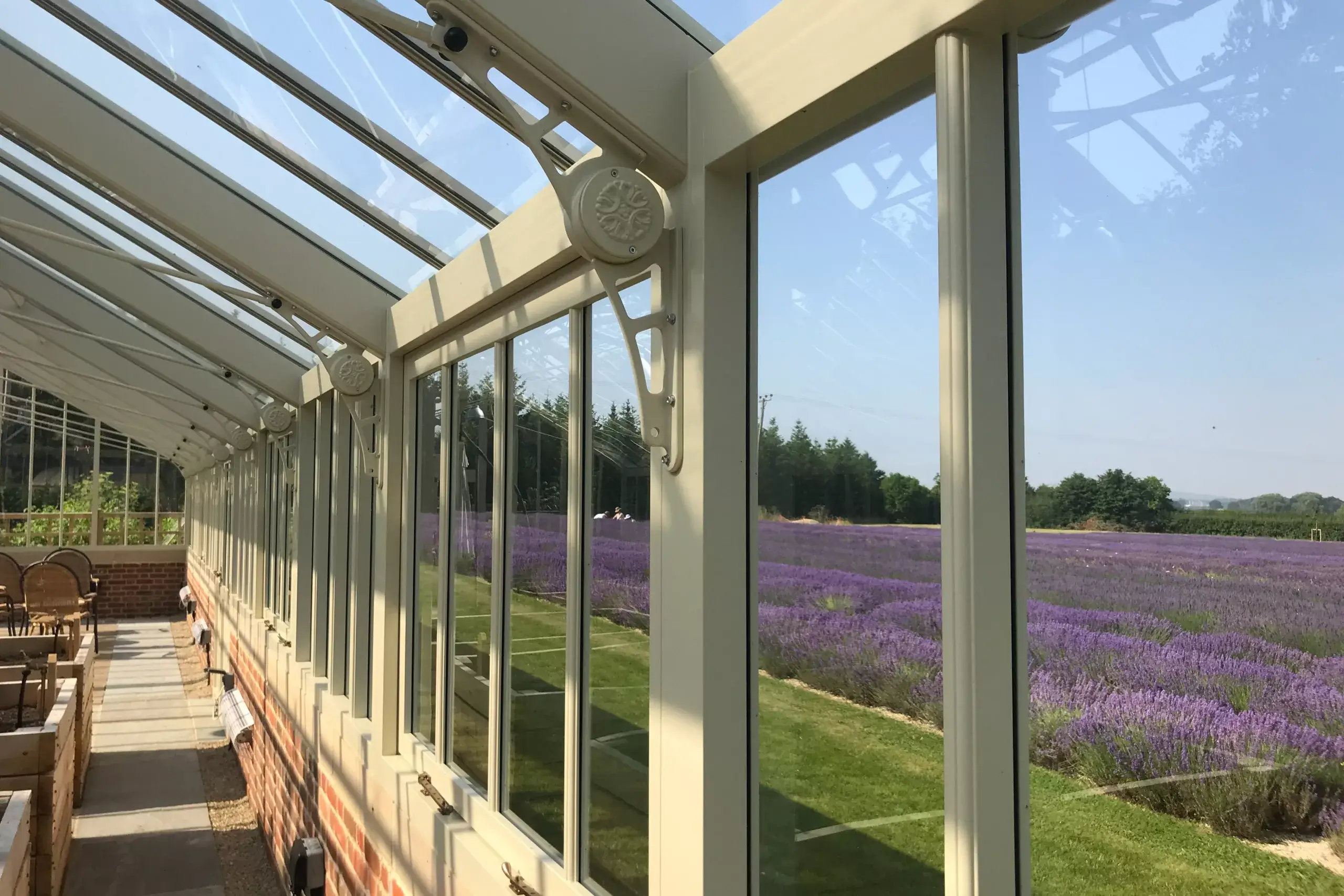
To learn about the White Cottage Promise click here and look out for the next instalment of our project planning journals where we’ll talk about how to approach the base work in more detail and offer guidance on choosing the right accessories.
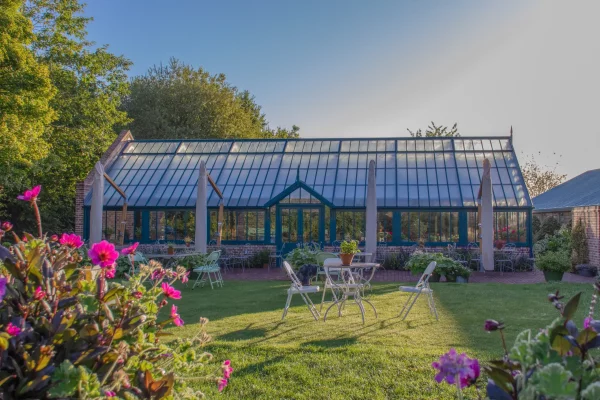
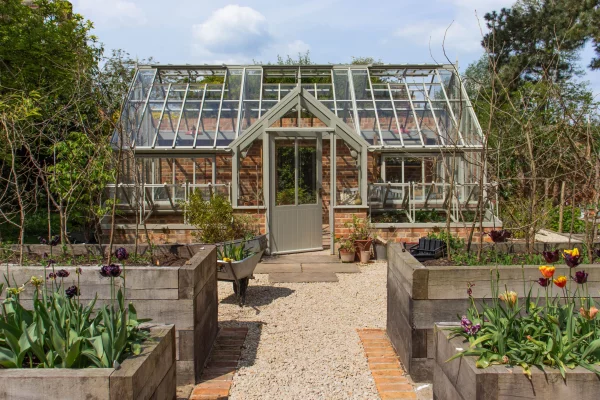
Comments
This article doesn't have any comments yet.